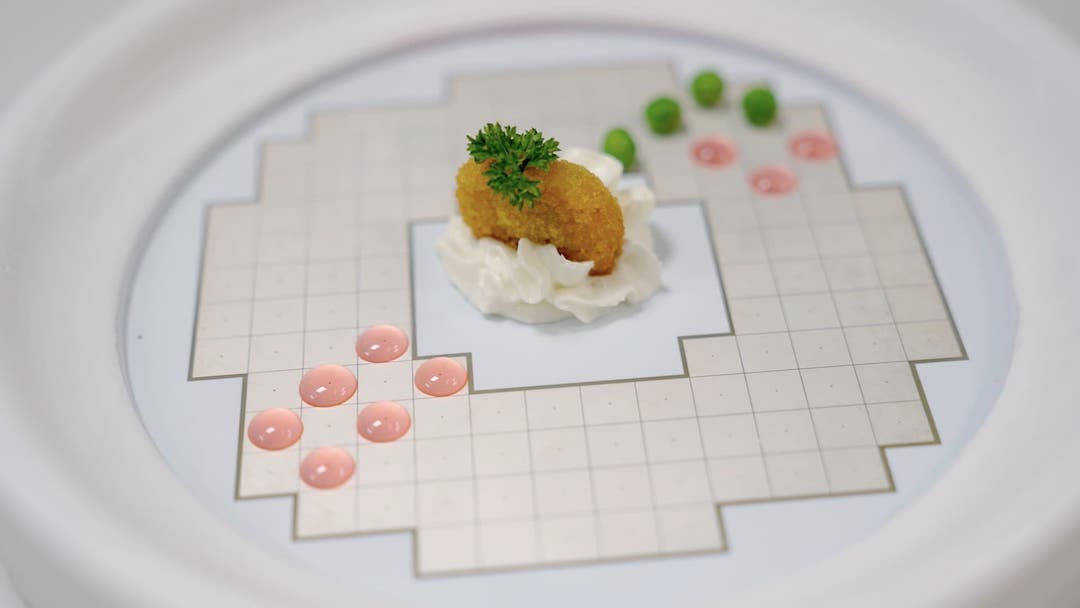Scientists from Monash University have created an interactive dining experience like no other.
Known as ‘Dancing Delicacies’, the program was designed to make food ‘dance’ across a plate using computer programming. As part of the research, scientists worked alongside top chefs to craft new dishes that were then offered at several dining experiences. This gave chefs the opportunity to see the program in action, highlighting how combining tech and food can open new doors for culinary experimentation.

Dancing Delicacies being enjoyed by diners
Talking tech
Dancing Delicacies uses a system consisting of a plate containing electrodes. These electrodes can be programmed to move the elements of a dish, including sauces, making them combine to produce new flavour profiles and elements.
In order to achieve this phenomenon, the food is served on a plate containing a dielectric film (or stretched Parafilm held in place by a frame) and an electrode board. The plate uses electrical voltage to draw droplets of food towards the charged electrodes, making them appear like they are dancing.
The program was designed by food interaction design researcher and lead author of the research, Jialin Deng, who wanted to combine the underlying properties of food with ‘computational’ capabilities.
“For example, a chef can predefine the locations where they want to put the food droplets and ingredients, and they can programme the dish frame by frame, like you do in animation,” she explains.
“We can put solid and watery items together, we can merge two different flavours, we can transport various things towards the plate, we can play with chemical or physical reactions like in molecular gastronomy.”
Future implications
The Monash University team believe this system could be the future of the hospitality and dining industry.
“The integration of food and computing will transform how we understand both computing and food as not two very different things, but a new frontier that combines the best of both,” says Professor Florian ‘Floyd’ Mueller from the Faculty of IT’s Creative Technologies discipline group and co-author of the study
“This will not only change the hospitality industry, who can create much more engaging experiences by being able to tell new and different stories through interactive food, but also computer science education, where students learn about computing by eating food.”

A Dancing Delicacies dish
According to Monash Club Head Chef, Mr Mathew Birley, the program offers exciting opportunities for creativity and performance.
“The project helped to unlock additional dimensions to creating dishes while thinking more keenly about the diner’s interaction with the food.”
“We can start to interact with the feelings and movements of the diner. I think this can have a great impact on what we can do as chefs in the dining industry.”
Overall, the aim is to deliver an exciting and engaging interactive dining experience, leaving diners in awe of the power of technology and food when combined.
To read about how technology is supporting other areas of the food industry, click here.
